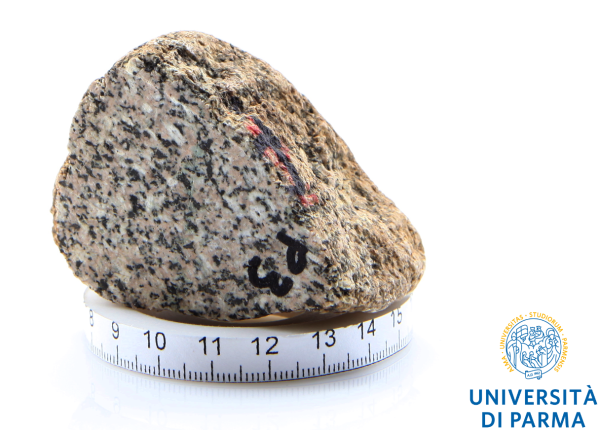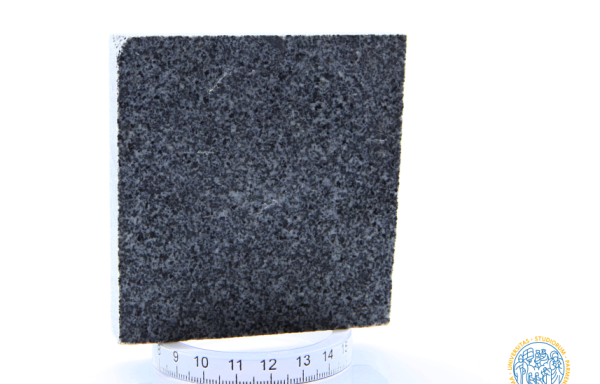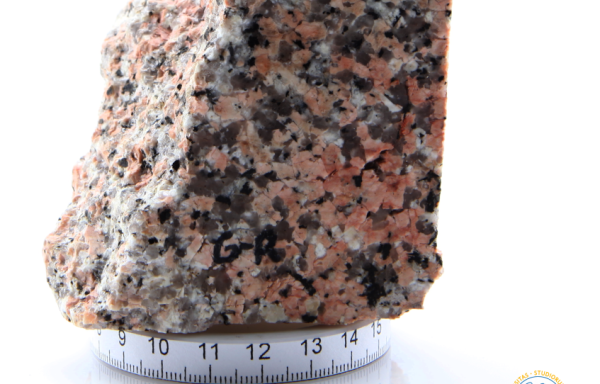Rock
Phaneritic rock made of randomly oriented large crystals: plagioclase grains have a milky white aspect; alkali felspar grains are pink; amphibole grains are dark green. By naked eye, an almost equal amount of plagioclase and alkali feldspar is observed, thus the sample can be classified as monzonite. The rock sample comes from, from which the term “monzonite” derives. The intrusion formed during the Middle Triassic igneous activity (236-238 Ma) of the Dolomites (Southern Alps, North Italy) that also produced the nearby Predazzo and Cima Pape intrusive bodies and the surrounding abundant lava flow and pyroclastic successions (Abbas et al., 2018, https://doi.org/10.1016/j.jsg.2018.05.012).
Etymology: the term monzonite derives from the Mt Monzoni intrusion (from which the P3 sample comes from).
Thin section description:
Most of the field of view is occupied by feldspar crystals strongly altered to an aggregate of fine-grained white mica (sericite); these crystals appear dusty in the PPL view and can identified as plagioclase (Pl) or alkali feldspar (Afs) by their characteristic twinning in the XPL view. The Afs and Pl crystals signed in the PPL view exhibit the Carlsbad twinning and the multiple albite twinning, respectively, when they are seen in XPL view. Further minerals can be identified in the PPL view: crystals with a green colour are amphibole (Amp), while those with a brown colour are biotite (Bt); the small colourless areas are occupied by quartz (Qz), while the black areas are occupied by opaque minerals (Opq).
| thin section PPL |
thin section XPL |
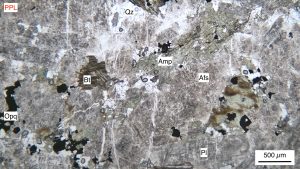 |
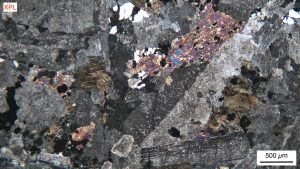 |
Map
PPL
XPL
Info
| Place: | Mt Monzoni (Dolomiti) |
| Classification: | monzonite |
| Specimen n°: | P3 |

